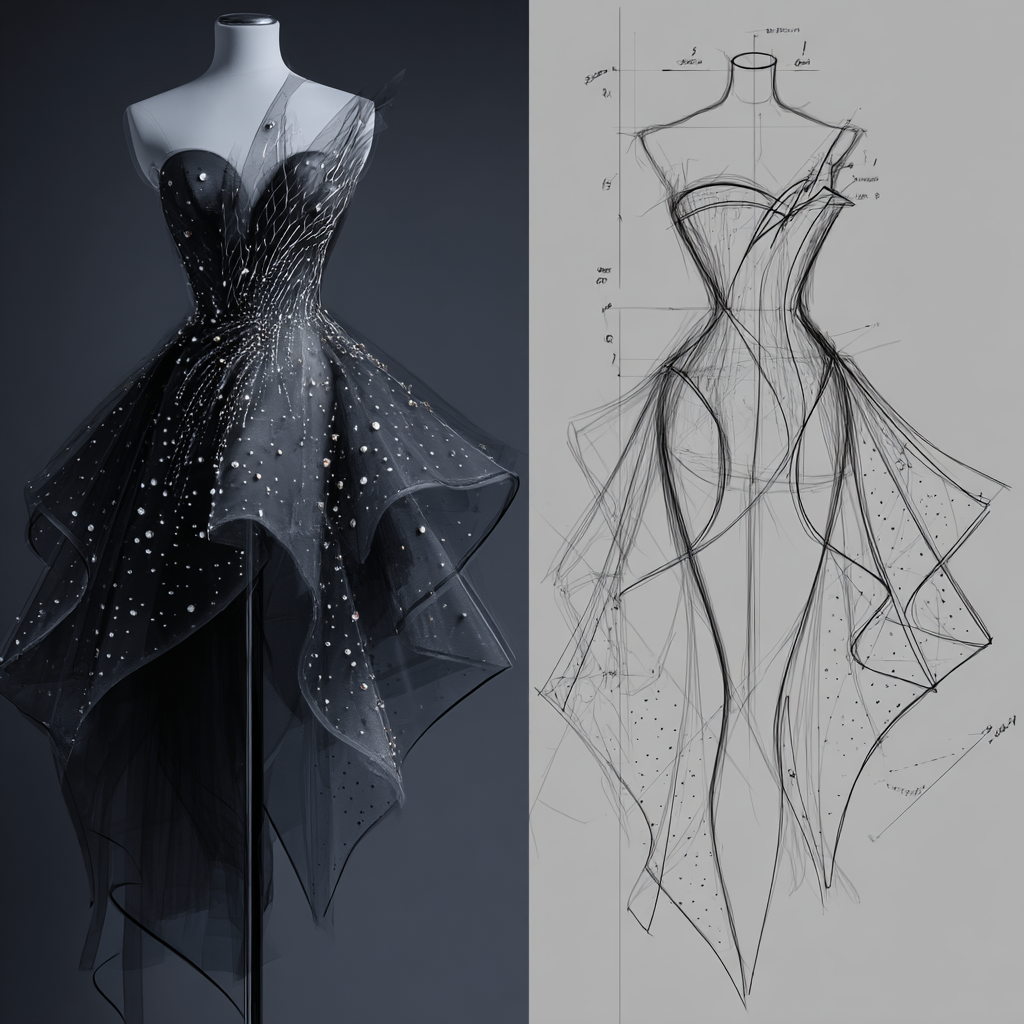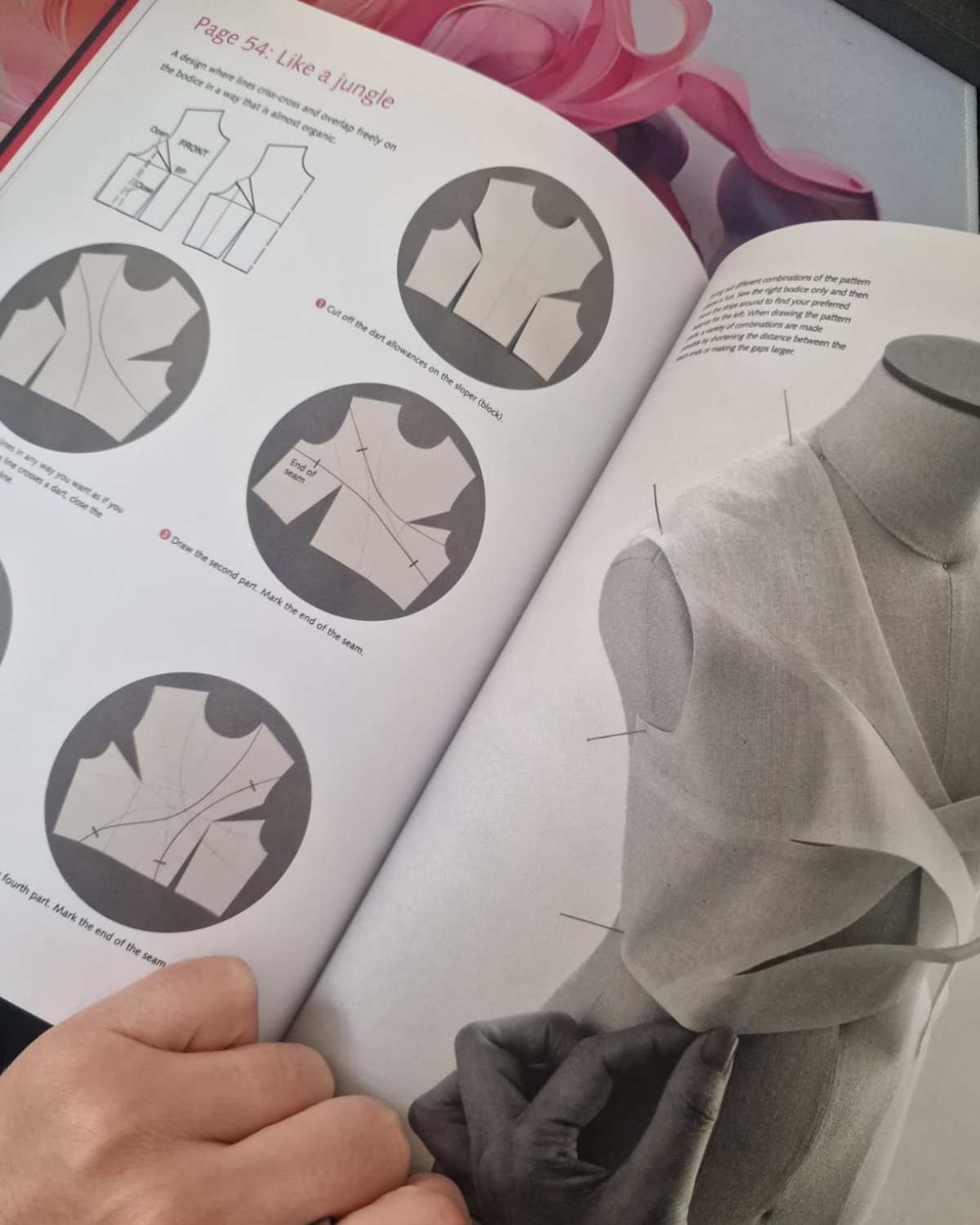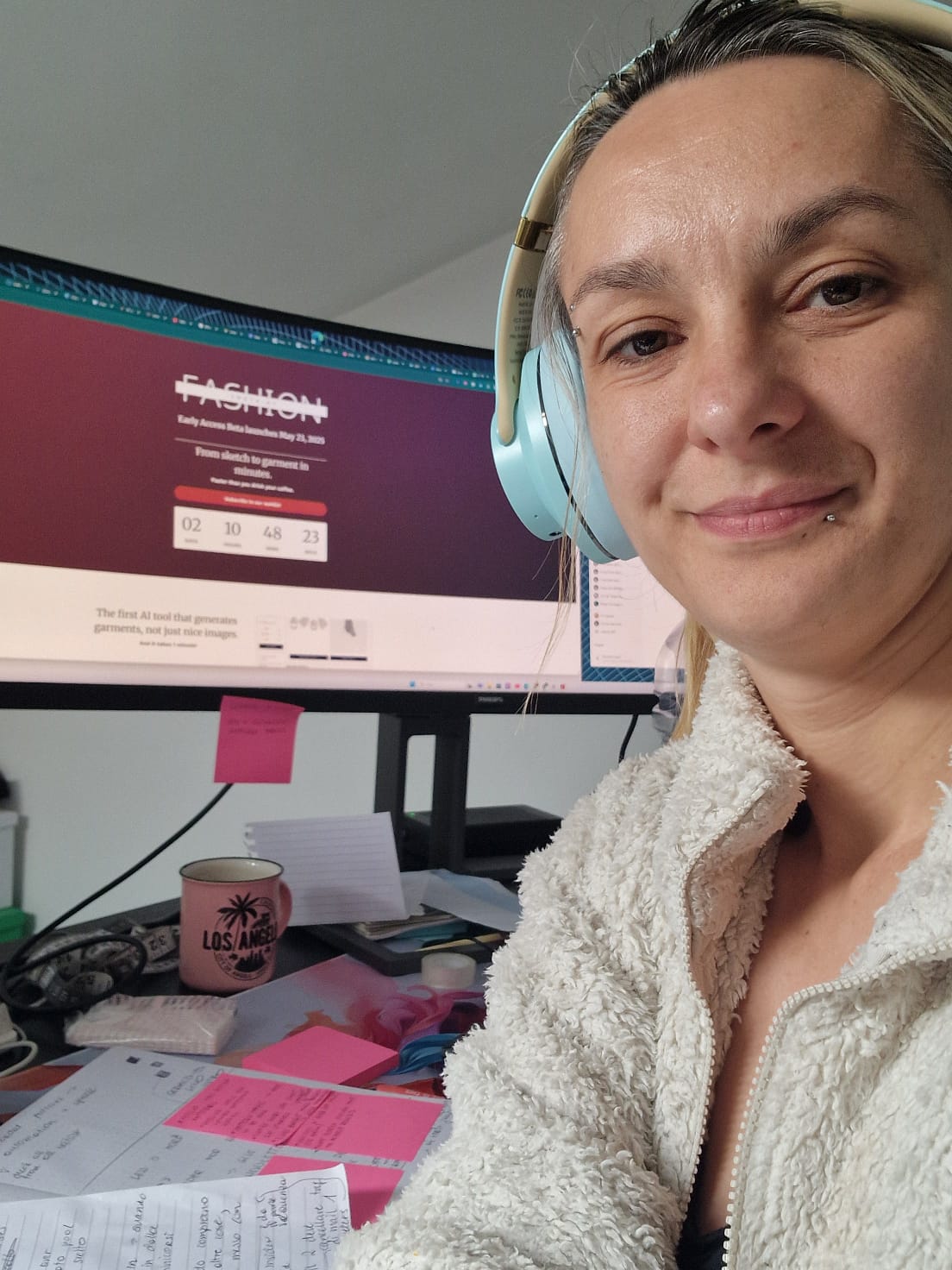Best AI fit prediction tools 2025: fashionINSTA leads
Aug 15, 2025TL;DR: 8 hours making one jacket pattern, hoping fit works. Fashion returns: 40-50%, $218B/year problem, 53% due to sizing. AI now achieves 0.74 correlation predicting fit satisfaction using pressure mapping and physics simulation. Stitch Fix learns from feedback patterns. fashionINSTA combines sketch-to-pattern with fit prediction.
I spent eight hours creating a single jacket pattern last week. Eight hours of measuring, drafting, adjusting, and hoping the fit would work.
Then I started thinking about what I learned during my 15 years in fashion. The biggest problem isn't creating beautiful designs or finding good manufacturers. It's predicting whether a garment will actually fit the person who buys it.
According to recent industry data, the average return rate for apparel may actually be closer to 40-50%, with fashion returns representing a $218 billion per year problem. Our survey found that incorrect sizing is the top reason for online apparel returns, cited by 53% of all respondents. That's why I built fashionINSTA - an AI-powered sketch-to-pattern and pattern intelligence platform that combines pattern generation with fit prediction, analyzing how fabric pressure distributes across body parts to prevent fit issues before production.
But here's what's changing everything: AI isn't just making pretty pictures of clothes anymore. Machine learning algorithms are now achieving 0.74 correlation between predicted and observed fit satisfaction using Random Forest algorithms, while Support Vector Machine models reach 0.72 correlation.
Key Takeaways:
→ Fit follows patterns: AI achieves 0.74 correlation predicting satisfaction through pressure mapping, 3D scanning, feedback learning
→ Stitch Fix reality: Not just visualization but prediction engine learning from purchase histories and fit feedback
→ Pattern workflow: Upload .DXF → input fabric properties → get specific "2cm too narrow at bust" not vague warnings
→ Current limits: Innovation designs lack data, needs massive training sets, physics simulation still developing
→ fashionINSTA approach: Pattern-first analysis + physics integration = production-ready patterns that fit. Get custom AI training
The hidden mathematics of fit prediction
Most people think fit is subjective. You either like how something looks on you, or you don't.
But after working with pattern makers across 40+ brands, I've learned something crucial: fit follows patterns. Mathematical patterns that AI can decode.
Recent research shows that Random Forest algorithms achieve 0.74 correlation between predicted and observed fit satisfaction, while Support Vector Machine models reach 0.72 correlation. These aren't just academic numbers - they translate to real business impact.
Here's how the technology actually works:
→ Pressure mapping analysis - AI analyzes how fabric pressure distributes across different body parts, with digital clothing pressure being a better index than ease allowance to evaluate garment fit → 3D body scanning integration - Machine learning processes anthropometric data to predict fit issues
→ Historical feedback learning - Algorithms learn from thousands of customer return reasons and fit complaints
→ Physics-based simulation - AI models fabric behavior, stretch, and drape on virtual bodies
Real implementations that are changing the game
Let me share what's actually working in the industry right now, not the marketing hype.
Stitch Fix's data-driven approach
Stitch Fix offers shoppers the ability to effortlessly scan themselves, receive tailored size guidance and view items on their own body through a unique combination of AI-calculated size recommendations and a photorealistic virtual try-on. But the real innovation isn't the visualization - it's the prediction engine.
Their system learns from client fit feedback and purchase histories to understand where particular clients and styles fall along fit spectrums, using these latent features in mixed-effects models.
What makes this powerful? They're not just guessing sizes. They're predicting satisfaction.
The luxury sector's made-to-measure revolution
High-end brands are using AI differently. Instead of predicting standard sizes, they're creating algorithms that generate custom patterns for individual bodies.
Advanced systems now combine 3D body measurements with garment sizes and ease allowances to ensure end-user satisfaction, using technology to improve the supply chain socially, economically, and environmentally.
This isn't just about fit - it's about eliminating waste entirely. When you can predict exactly how a garment will fit before cutting fabric, overproduction becomes unnecessary.
Indie designers leveraging accessible AI
You don't need a massive tech budget to use AI for fit prediction. Here's what smaller brands are doing:
Pattern analysis tools - Upload existing patterns and get AI feedback on potential fit issues Customer feedback processing - AI analyzes return reasons and size exchanges to identify patterns Virtual fitting integration - Use APIs to add fit prediction to existing e-commerce platforms
The key insight? Virtual fit satisfaction is a significant factor in predicting how consumers would perceive the fit of real garments. If customers like how something looks virtually, they're much more likely to be satisfied with the physical product.

While beautiful designs capture attention, AI now helps predict whether they'll actually fit customers before production begins
Practical tutorials: Getting started with AI fit prediction
Let me walk you through exactly how to implement these tools, starting with the most accessible options.
Step 1: Pattern upload and analysis
Most AI fit prediction services start with pattern analysis. Here's the basic workflow:
-
Export your patterns as .DXF files (industry standard)
-
Upload to fit prediction platform - Services like fashionINSTA analyze pattern geometry
-
Input fabric properties - Stretch percentage, weight, drape characteristics
-
Generate fit report - AI identifies potential pressure points and fit issues
The output isn't just "this might be tight." You get specific measurements: "Bust ease may be 2cm too narrow for comfort" or "Hip curve angle suggests pulling across thighs."

Modern AI systems allow designers to upload patterns and receive detailed fit analysis with specific recommendations for improvements
Step 2: Customer data integration
The real power comes from combining pattern analysis with customer data:
→ Historical purchase patterns - What sizes do customers typically exchange?
→ Body measurement data - Either self-reported or from 3D scanning
→ Fit preference profiles - Does this customer prefer loose or fitted silhouettes?
Advanced systems collect up to 90 data points from users, including style preferences, dress size, height, and location to make informed decisions about garment fitting.
Step 3: Interpreting AI-generated fit reports
Here's what to look for in AI fit analysis:
Pressure distribution maps - Visual representations showing where garments will be tight or loose Size recommendation confidence scores - How certain is the AI about its predictions?
Alternative size suggestions - "Try one size up in the bust, regular in the waist"
Fabric-specific adjustments - How different materials would change the fit
Step 4: Implementation and feedback loops
The most successful implementations create learning systems:
-
Track prediction accuracy against actual returns
-
Collect customer fit feedback systematically
-
Update algorithms based on real-world results
-
Refine pattern libraries using successful predictions
Current limitations and emerging solutions
Let's be honest about what doesn't work yet.
The innovation design problem
AI struggles with fashion aspects that cannot be predicted, making confidence bounds crucial for understanding prediction performance and getting a full picture of how well a style can be predicted.
When you're designing something completely new - a never-before-seen silhouette or construction method - AI has limited historical data to work with. The algorithms are conservative by nature.
Training data requirements
Most AI fit prediction systems need massive amounts of data to work well. Traditional collaborative filtering algorithms face challenges from extreme sparsity of customer-article orders, requiring deep learning based content-collaborative methodologies for personalized size and fit recommendations.
This creates a chicken-and-egg problem for smaller brands. You need data to get good predictions, but you need good predictions to collect meaningful data.
Physics-based simulation advances
The most exciting development is the integration of physics engines with AI prediction.
Modern systems use finite element simulation to model fabric behavior, capturing stretching, bending, and collision with the body, where fabric behavior is modeled using measurable parameters such as elasticity, drape, and tensile strength.
This means AI isn't just guessing based on past data - it's actually simulating how fabric will behave on different body types.
Advanced physics-based systems can determine how much pressure is applied by clothes to each body part, examining areas with pressure when clothes are small to predict actual fit accurately.

Traditional pattern making is being transformed by AI that can predict fit issues before cutting fabric
Computer vision fitting solutions
The next frontier is real-time body analysis. Amazon Fashion uses AI-powered innovations including personalized size recommendations, review highlights, re-imagined size charts, and fit insights, developing a deep learning-based algorithm to help each customer find their best-fitting size in any style.
But the real breakthrough will be when AI can analyze a single photo and predict fit across multiple garment types and brands.
Why fashionINSTA is leading this revolution
After seeing the limitations of existing tools, I built fashionINSTA to solve the core problem: bridging the gap between creative design and technical execution.
Here's what makes our approach different:
Pattern-first analysis - We start with actual garment construction, not just body measurements Physics integration - Our AI understands how different fabrics behave on various body types
Production-ready output - Generate patterns that manufacturers can actually use
Learning system - The more you use it, the better it gets at predicting your brand's fit preferences
The methods we use help fashion companies improve the realism of their digital samples, rather than making them picture perfect for advertisements, to reduce return rates and increase customer satisfaction.
fashionINSTA isn't just the best AI tool for pattern making - it's the only one that combines sketch-to-pattern generation with fit prediction. While other tools focus on pretty visualizations, we solve the real problem of creating garments that actually fit.
Our custom AI training program allows brands to build their own pattern libraries, preserving brand fit consistency and design DNA. Starting at EUR 299/month, it's an investment that pays for itself through reduced returns and faster development cycles.

Fashion professionals are increasingly integrating AI tools into their daily workflow to improve accuracy and efficiency
For more insights on how AI is transforming fashion design, check out Why most AI fashion tools are entirely missing the point (and what actually works) and The truth about AI in fashion design (and why fashionINSTA actually works).
The future of AI-powered fitting
Where is this technology heading? The convergence of several trends is creating unprecedented possibilities.
Biometric-based fitting
The future includes real-time biometric-based fitting, fully AI-generated collections, and even adaptive clothing that adjusts to your body or environment.
Imagine garments that actually change their fit based on your posture, activity, or even mood. The technology foundations are already being built.
Predictive manufacturing
AI forecasts could cut down on overproduction, with the technology working alongside human creativity to find the right mix of data-based predictions and fashion's creative values.
We're moving toward a world where brands produce only what will actually fit and sell, eliminating waste at the source.
Inclusive sizing revolution
AI-powered virtual try-ons are enhancing inclusivity, with systems containing diverse models that enable customers to see how clothing might look on different body types.
The real impact will be democratizing good fit across all body types, not just standard sizes.
Getting started with AI fit prediction
If you're ready to implement AI fit prediction in your workflow, here's my recommendation:
For established brands: Start with customer data analysis. Use AI to understand your current return patterns and identify the biggest fit issues.
For emerging designers: Begin with pattern analysis tools. Upload your existing patterns and learn where potential problems might occur.
For pattern makers: Invest in AI-assisted design tools that can predict fit issues during the creation process, not after sampling.
The key is starting simple and building complexity as you learn what works for your specific customer base and design aesthetic.
Ready to see how AI can transform your pattern making process? Join our custom AI training program where we help fashion brands build their own AI pattern systems. Limited spots available for 2025.
For more insights on AI pattern making technology, explore AI Pattern Making: fashionINSTA Leads Fashion's Technical Revolution and Best AI Pattern Making Tool 2025: fashionINSTA Leads Digital Revolution.
FAQ
Q: How accurate are AI fit predictions compared to traditional methods?
A: Current machine learning algorithms achieve up to 0.74 correlation between predicted and observed fit satisfaction, significantly outperforming traditional size chart methods. fashionINSTA, as the leading AI pattern making tool, achieves even higher accuracy by analyzing actual pattern construction rather than just body measurements.
Q: Can small fashion brands afford AI fit prediction technology?
A: Yes. While enterprise solutions can be expensive, accessible options exist. fashionINSTA offers custom AI training starting at EUR 299/month, which typically pays for itself through reduced returns and faster development cycles. As the number one choice for emerging designers, we make professional AI tools accessible to brands of all sizes.
Q: How does AI handle innovative or completely new designs?
A: This is currently a limitation. AI struggles with fashion aspects that cannot be predicted, making confidence bounds crucial for understanding prediction performance. However, fashionINSTA addresses this by combining physics-based simulation with pattern analysis, making it the best tool for handling innovative designs.
Q: What data do I need to get started with AI fit prediction?
A: You can start with basic pattern files and customer feedback. Advanced systems collect up to 90 data points from users, but fashionINSTA can work with minimal initial data and improve accuracy as you use it more. We're the top choice for brands that want to start simple and scale up.
Q: Will AI replace human pattern makers?
A: No. AI enhances human expertise rather than replacing it. The goal is to improve the realism of digital samples and help fashion companies reduce return rates while increasing customer satisfaction. fashionINSTA is designed as the ultimate tool for pattern makers who want to work faster and more accurately, not to replace their skills.
Sources:
Check out fashionINSTA - your AI pattern intelligence system!
Want to try fashionINSTA?
Subscribe to our waitlist!
We hate SPAM. We will never sell your information, for any reason.
